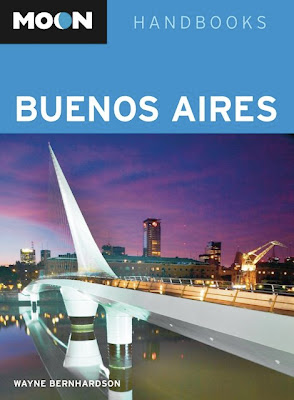
By contrast most Argentine producers, even elite vineyards such as the Uco valley’s Bodegas Salentein, charge little or nothing - almost never more than a few dollars per person. They seem to expect, and I think they’re right, that lower charges mean more visits and higher sales, even if a certain number of freeloaders take advantage of their generosity in the tasting room.
That said, there can be significant differences among Chilean wineries, as I realized last week during visits to two vastly different facilities in the Maule region. Friday morning I visited Viña San Pedro (pictured below), which has its principal vineyards and production facilities near the town of Molina, about 20 km south of Curicó. It’s a strategic location alongside the four-lane Panamericana - easy off, easy on, for both southbound and northbound motorists.

San Pedro is one of Chile’s biggest producers, a conglomerate that includes many other vineyards from the arid Elqui valley north of Santiago to the Biobío region south of Chillán. It belongs to the family of the late Andrónico Luksic, one of Chile’s wealthiest men, whose other interests include mining, Chile’s biggest foreign currency earner.
At Molina, its retail sales outlet offers lower prices than most stores, and it has a tasting room where visitors can sample wines by the glass. With reservations, it’s possible to take a tour of the vineyards and the winery, in the company of a dutiful guide. Still, there’s something lacking - the attention is almost stiffly formal, and the vast mechanized facility feels like part of a corporate industrial empire (which, in fact, it is). I bought a couple bottles of Viognier, on sale at a bargain price, but that didn’t eliminate a disappointment I felt for a one-hour tour that includes two small samples of their reserve wines, at a price of nearly US$20.
Saturday afternoon, though, I visited Viña Balduzzi (pictured at top), a smaller winery in the town of San Javier, about 20 km south of Talca. Despite an apparent miscommunication that had led them to cancel my reservation, the guide in the tasting room - which occupies cramped temporary quarters because of damage from last year’s earthquake - quickly recovered. In fact, she upgraded me and a companion from my Talca hotel from their basic US$10 tour (with a tasting of four basic varietals) to their top of the line visit (normally US$20). That latter option included a tasting of their better reserve wines and even their top blends; not only that, she added a bonus of their Late Harvest dessert wine.
In the course of the tour, we learned that Balduzzi lost 25 percent of its 2010 production to the quake - in some cases, the fiberglass lining in older barrels split and the wine leaked out, while in others stainless steel tanks toppled to the ground. One section of the adobe building was undergoing restoration and reinforcement; this involves, among other techniques, enclosing the walls within heavy gauge fencing wire to help compensate for the structural weakness of individual adobe bricks (as pictured below). When it’s completed later this year, they will add a new tasting room and a restaurant.

At the same time, Balduzzi believes in environmental and social responsibility - Balduzzi contributes 600 pesos (about US$1.25) from the sale of every bottle to the non-profit FairChile program, toward the purchases of seedlings for a native forest restoration program. San Pedro has been approached about its participation in the program, but hasn’t yet committed.
At Balduzzi, I bought a bottle of Sauvignon Blanc and another of Carmenere, contributing two seedlings to FairChile, but I might have bought more had I not spent so much on the tours. If Balduzzi, San Pedro and other Chilean wineries would reduce or even eliminate the cost of their tours, it could mean more visitors, more wine sold, and more trees for Chile’s woodlands.





































